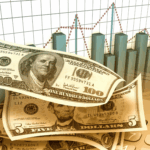The Federal Reserve’s recent decision to maintain current interest rates comes as tariff discussions and geopolitical uncertainty loom large. Market participants anticipated these developments while keeping a close watch on inflationary signals. With an unpredictable global landscape, economic stakeholders remain cautious as they assess the potential impact on consumer prices and economic stability. This unfolding situation draws international attention as it demonstrates how interconnected global trade and geopolitical events are with domestic monetary policies.
Comparing prior discussions, tariffs were anticipated to balloon inflation due to increased trade tensions. Earlier reports suggested that businesses had safeguarded against immediate impacts by stockpiling inventory. Even as the initial effects were muted, with limited immediate inflationary pressure, economists predicted eventual price increases. The current situation aligns with earlier forecasts, where inventory strategies temporarily cushioned the economy from abrupt cost surges, a point reiterated by various experts.
How Are Tariffs Influencing Current Inflation Levels?
Current tariffs were described by Fed Chair Jerome Powell as imposing “a cost burden” that could spark significant inflation in the short term. Despite earlier tariff implementations, consumer prices remained relatively stable, with May inflation slightly below economic predictions at 2.4 percent. However, the potential for further price hikes looms, aggravated by the tariffs initiated under President Trump’s administration.
Will Inflation Rise Despite Geopolitical Tensions?
Ongoing geopolitical tensions have exacerbated inflation worries. Concerns are amplified by ongoing conflict in the Middle East, notably between Israel and Iran, which threatens critical oil routes. Such geopolitical instability has contributed to a spike in crude oil prices, now hovering around $74 per barrel, pushing global inflation forecasts from 3.7 percent to a potential 4.1 percent, according to analysts.
In contrast to earlier predictions of immediate inflation surges, economists now suggest the full effects of tariffs will unfold over the coming months. Companies previously buffered themselves by increasing inventory, thus delaying inevitable price hikes. However, with the depletion of these stocks, tariff impacts are expected to surface more tangibly from mid-summer.
Besides tariffs, geopolitical risks such as the Strait of Hormuz’s instability could intensify price pressures globally. Such developments highlight the fragility of the global economy when exposed to multifaceted threats, particularly in energy markets. Subsequent actions by central banks could offer insights into managing these challenges, but effective policy responses remain uncertain.
While some market expectations for interest rate cuts have diminished due to new tariffs, President Trump has criticized the Fed’s stance, urging immediate adjustments. Investors remain divided on anticipated rate cuts, reflecting complex dynamics within the U.S. economic policy landscape. Additionally, speculation surrounds potential successors for Jerome Powell, adding another dimension to the current economic discourse.
Understanding the interplay between tariffs, geopolitical tensions, and monetary policy adjustments is crucial for anticipating future economic conditions. As geopolitical developments evolve, they will significantly affect trade patterns, energy supplies, and broader economic stability. Strategic responses should focus on both mitigating short-term effects and reinforcing long-term resilience against inflationary pressures and global uncertainties.










